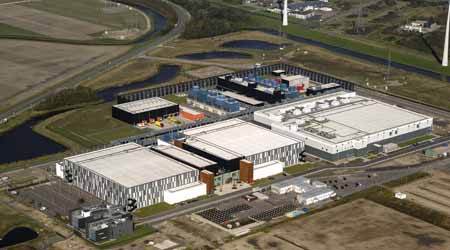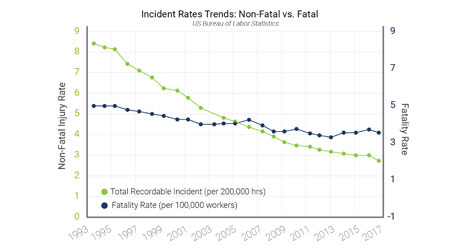 The demand for data processing capacity has led to the construction of large data centers and tightened schedules, potentially increasing safety risks.Aerovista Luchtfotografie / Shutterstock.com
The demand for data processing capacity has led to the construction of large data centers and tightened schedules, potentially increasing safety risks.Aerovista Luchtfotografie / Shutterstock.comNew Safety Concerns Are Reshaping Data Center Construction
The data center construction boom combined with a scarcity of skilled labor is leading to some serious safety concerns.
According to statistics from the Bureau of Labor Statistics and OSHA, 20 percent of annual U.S. workplace fatalities occur in the construction industry. This statistic is measurably worse for first-year laborers, who account for 60 percent of construction site injuries. Since the inception of OSHA, these injury numbers are down significantly — approximately 65 percent — even as the number of construction workers has doubled, but at the same time, the fatality rates have plateaued. It is essential to adopt construction innovations to allow for the rise of both safety and efficiency at the same time.
Dangers of the Data Center Boom
Just 15 years ago, there were a few million-square-foot data center facilities, but no real data center campuses, no hyperscale facilities, and no public cloud computing facilities. Now? By some estimates, there are more than 500 hyperscale facilities worldwide. The technological advances we are seeing year-over-year are yielding a greater need for these massive centers. This swelling demand brings with it the challenge and risk of increasingly tight time constraints. The prototypical 40-hour work week is shifting towards 60 hours for the sake of adhering to these strict schedules. Essentially, workers are being pushed to go faster. Greater pressure for speedy work in potentially hazardous conditions inevitably fosters a more dangerous work environment.

(Despite a significant downward trend in recordable, non-fatal incidents, the fatality rate has simultaneously plateaued — a sign that industries are not getting better at preventing serious incidents and that high-risk activities require more attention.)
These risks are being compounded by skilled labor shortages. A 2017 Deloitte study shows that technology advances have been creating jobs for the last 140 years, but that “hard, dangerous, and dull jobs have declined.” Several major markets have skilled labor shortages, and the volume of trade school attendees is on the decline. If construction is made easier, safer, and more rewarding, will they come back? Considering the time it takes to train new employees coupled with these regional labor shortages, it would seem that the industry is exacerbating already serious risks. It is essential to balance safety, quality, schedule, and cost, keeping in mind that people will always be the industry’s most important asset.
Related Topics:















